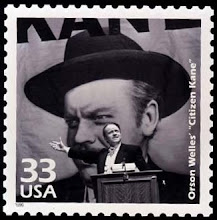Friday, May 9, 2008
Apt Pupil
Today is the 50th Anniversary of the release of Alfred Hitchcock’s Vertigo (1958), which stands as perhaps my favorite American movie of the sound era. It’s hard to tell when it took this particular position for me, but as time has passed, Hitch’s other films, as amazing as they are, recede in importance to these eyes, while Vertigo still stays so immediate and real and palpable.
Don’t get me wrong—I’ll very happily sit down to consume North by Northwest or Strangers on a Train or Rear Window again and again. But there’s something about Vertigo that is uniquely compelling. Perhaps it’s the fact that it largely eschews his trademark gallows humor, which makes his other films undeniably entertaining, but which I suspect also acted as a defense mechanism so we don’t get too close to his sensibilities. But Vertigo cuts to the bone, and is as raw and open an exposé of Hitch’s pathologies as one can find in his body of work, without allowing levity to distract or dilute its impact.
Perhaps I love it so much because it acts as a perverse metaphor for the task of film director—a man crafts a woman to his exact specifications of performance: how to walk, dress, behave, with every small little detail meticulously, even obsessively, stage-managed. It's all about power and control and is a highly revelatory insight into Hitch’s own self-awareness of how all-consuming a director's preoccupations can be—especially for someone who embeds so many details and subtexts as carefully as he does.
But the truth is, it isn’t the story of one man manipulating a woman to his specifications—it’s the story of two. And that’s another thing I like about the film, because the “mystery” of Madeline is revealed far earlier than would be typical for most films. Some take issue with Judy’s flashback letting the cat out of the bag so early. But it’s a smart decision, because Hitch’s MacGuffin in Vertigo is the murder plot altogether. It’s completely incidental to what really matters in the film, for the story is Scottie’s obsession and how it dooms him. But unlike most of Hitch’s films, there is no resolution, no tying up of loose ends, no comeuppance for the killer. Just the figure of Scottie at the top of the church tower, devastated and alone.
I think I also have grown to love the film more since I moved to the Bay Area. For San Francisco, to me, is a city of history and romance, memory and heartbreak, and it’s hard not to drive through it without encountering some of the stops in Scottie’s journey through the film. Here's a good website that offers an overview of the assorted locations for Vertigo--both in SF and further south. And two of the most iconic images of San Francisco are featured both in the film and on the FDC I created for the issue of the Jimmy Stewart stamp—the Golden Gate bridge and the Palace of Fine Arts.
This particular postcard doesn’t have as many postmarks as some of the other Vertigo ones I have, but I chose this for the blog because I like how the two bridge spans reflect each other. Sometimes, I accumulate duplicate one-sheet postcards on a film after some older related stamp issues (like the Hitchcock or Bernard Herrmann stamps) have already been released, and while I could’ve included them on the front instead to join Stewart, I liked how these two stamps complement the setting and architecture prominent on the poster.
The Golden Gate bridge stamp was part of the Celebrate the Century series of the 1930s (Scott #3185l) and the Palace of Fine Arts was part of an American Architecture release back in 1981 (Scott #1930). .
-->
(for more thoughts and stamps on Vertigo, check out my follow-up entry).
-->
Subscribe to:
Posts (Atom)

